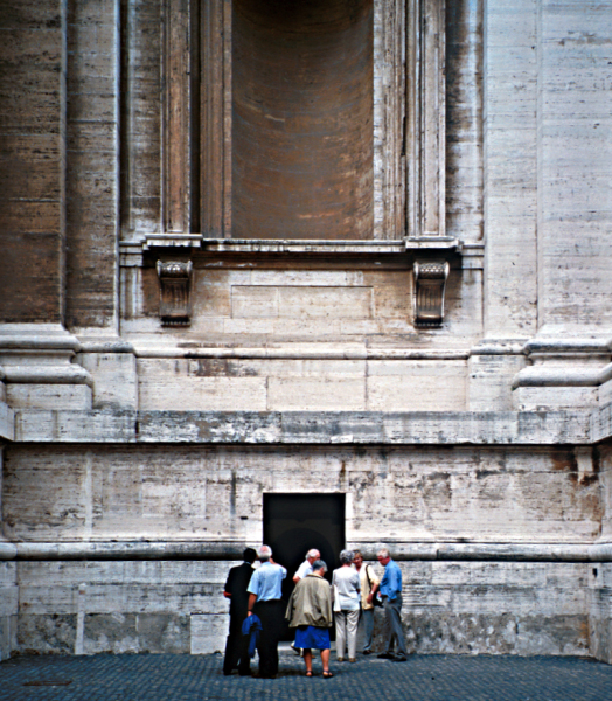 |
3D visual information and GIS technologies for paintings’ documentation in the M Sepulchre in the Vatican Necropolis M. Forte (CNR-ITABC, Roma) S. Tilia, A. Bizzarro, A. Tilia (TREERRE sas) |
 |
||
|
Digital technologies may be very helpful in the graphic documentation of paintings, not only for the inherently more detailed and faster method of drawing, but, in particular, for the 3D representation of data (structures and materials) in real time, that is, the possibility to have many dynamic views of the same model in order to visualize and interpret features, shapes, and state of conservation of structures and materials. Moreover, it is very important to highlight that paintings or mosaics are intelligible as 3D objects rather than 2D objects, since they represent solid objects, after all. Then, using GIS technologies for collecting data, it is possible to process the relative information in detail. There are many situations that one is faced with in the graphical documentation of surfaces, whether flat, bossed or curved, with or without decorations. The traditional form of graphic documentation, interpretative by definition, favours different levels of detail, dipending on the scale of reduction and the different objectives under study (location of degraded areas as opposed to decorated ones, presence of discomformities and cracks, production of images and thematic maps derived from particular analyses such as, for example, Thermal Infrared surface scanning). Difficult to produce is certainly the documentation of a decorated vault. For this reason, we have chosen to consider the walls and the polychrome mosaic vault of the M Sepulcher, also known as Cristo Sole (II-III cent. a.D.) in the Vatican Necropolis. The mosaic presents a small tessera decoration (of which only a fraction is still in place), on the walls and on the highly depressed vault; where the tesserae are missing, the mosaic preparatory surface still enables us to interpret the original decoration. Furthermore, the main goal of our project is the virtual detailed 3D reconstruction of a micro-model of the above mentioned decorations through the use of digital techniques, in order to have a final "cognitive" representation. To obtain this, we have implemented new tools for the acquisition of detailed 3d surfaces. The general positioning (georeferencing) was achieved thanks to a Leica TCR 1103 total station; this instrument also enabled us to obtain vast amounts of surface data for the 3D model thanks to its reflectorless Laser EDM (Electronic Distance Measuring) range finder. Where more detail was necessary, further surface data was gathered using a Microscribe 3D Mechanical Arm Digitizer coupled to a laptop computer and driven by the Rhinoceros“ 3D surface modelling software. The project involves these main approaches: digital acquisition of surfaces, digital documentation of mosaics and paintings, 3D virtual reconstruction of models, 3d virtual communication of the information by VRML metaphors through Internet. |
Keywords: micro-GIS, 3D, M Sepulchre, Cristo Sole, Virtual Reconstruction
e-mails: maurizio.forte@mlib.cnr.it
|
||
